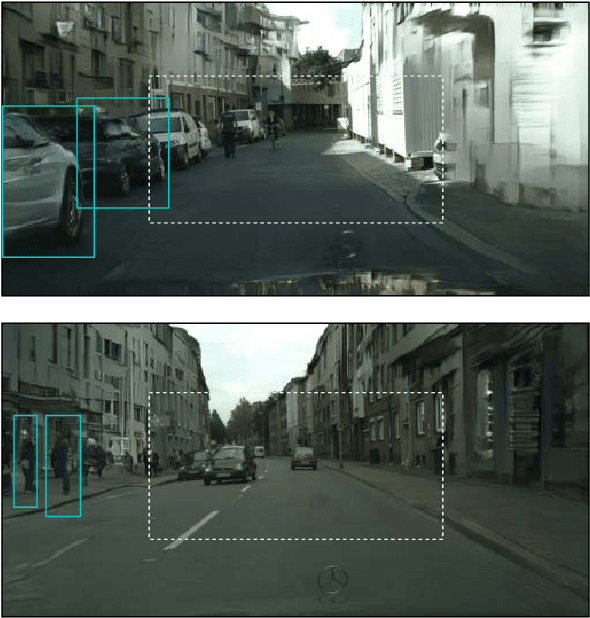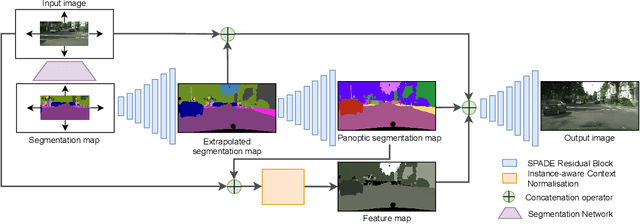Soumya Ranjan Dash
SemIE: Semantically-aware Image Extrapolation
Aug 31, 2021



Abstract:We propose a semantically-aware novel paradigm to perform image extrapolation that enables the addition of new object instances. All previous methods are limited in their capability of extrapolation to merely extending the already existing objects in the image. However, our proposed approach focuses not only on (i) extending the already present objects but also on (ii) adding new objects in the extended region based on the context. To this end, for a given image, we first obtain an object segmentation map using a state-of-the-art semantic segmentation method. The, thus, obtained segmentation map is fed into a network to compute the extrapolated semantic segmentation and the corresponding panoptic segmentation maps. The input image and the obtained segmentation maps are further utilized to generate the final extrapolated image. We conduct experiments on Cityscapes and ADE20K-bedroom datasets and show that our method outperforms all baselines in terms of FID, and similarity in object co-occurrence statistics.
CS-NET at SemEval-2020 Task 4: Siamese BERT for ComVE
Jul 21, 2020



Abstract:In this paper, we describe our system for Task 4 of SemEval 2020, which involves differentiating between natural language statements that confirm to common sense and those that do not. The organizers propose three subtasks - first, selecting between two sentences, the one which is against common sense. Second, identifying the most crucial reason why a statement does not make sense. Third, generating novel reasons for explaining the against common sense statement. Out of the three subtasks, this paper reports the system description of subtask A and subtask B. This paper proposes a model based on transformer neural network architecture for addressing the subtasks. The novelty in work lies in the architecture design, which handles the logical implication of contradicting statements and simultaneous information extraction from both sentences. We use a parallel instance of transformers, which is responsible for a boost in the performance. We achieved an accuracy of 94.8% in subtask A and 89% in subtask B on the test set.
 Add to Chrome
Add to Chrome Add to Firefox
Add to Firefox Add to Edge
Add to Edge